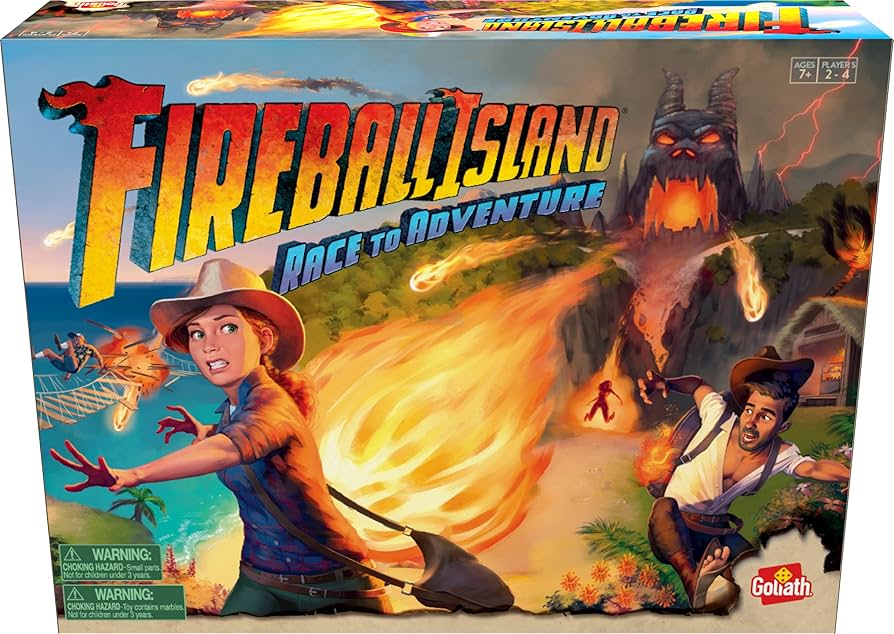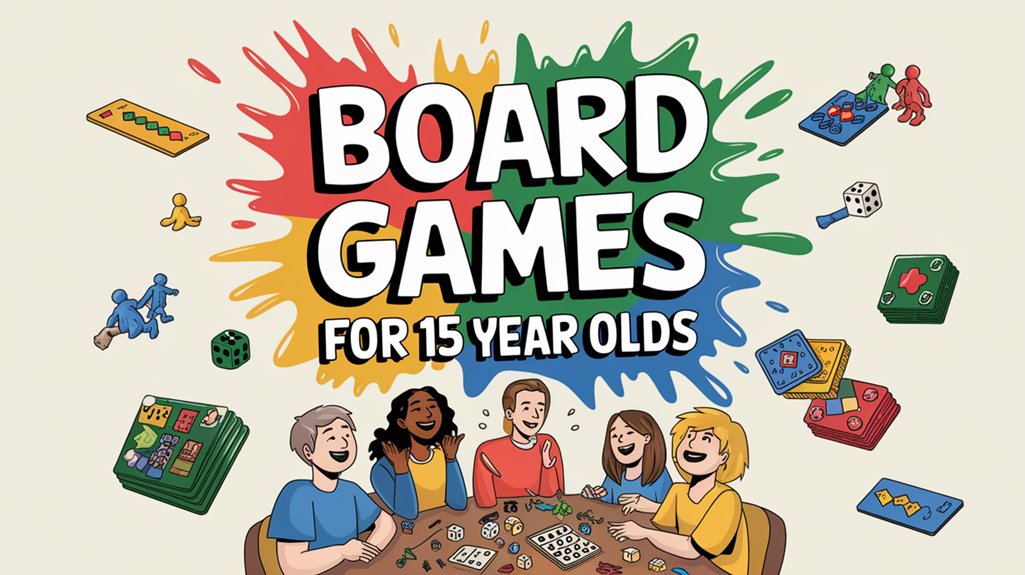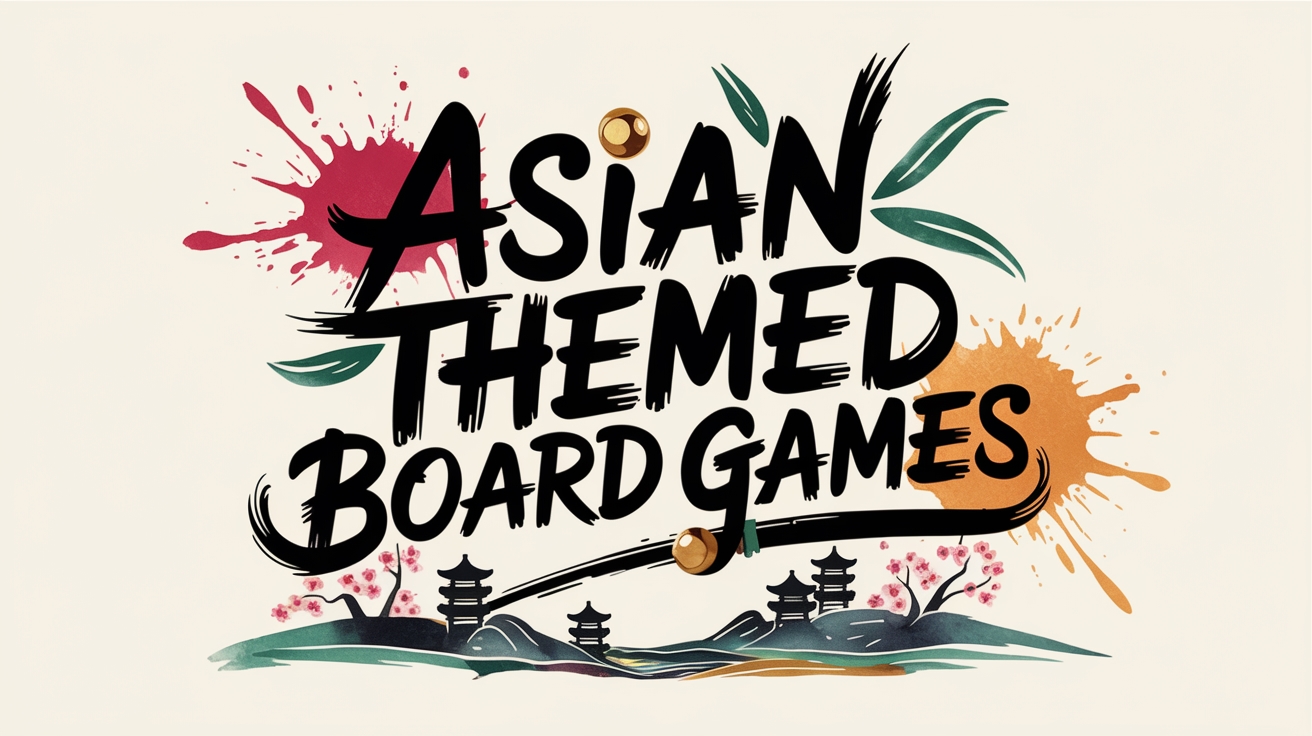Vintage board games occupy a specialized market where value hinges on multiple interconnected factors. Collectors evaluate these nostalgic artifacts through critical lenses: age, completeness, condition, and cultural significance. Games from the pre-digital era (1950s-1970s) typically command premium prices, with mint-condition rarities potentially worth thousands. Meanwhile, common titles with missing pieces might fetch mere dollars. The board game collecting arena continues to evolve as baby boomers and Gen-X enthusiasts compete for childhood treasures that represent both entertainment history and financial investment opportunities.
Key Takeaways
- Vintage board games (pre-1988) typically range from $20-$300, with rare examples like complete Swift Meats MLB games reaching $2,644.
- Completeness dramatically affects value—games with all original pieces command significantly higher prices than those missing components.
- Condition is critical, with factory-sealed games and those graded “Mint” or “Near Mint” fetching premium prices.
- Rarity factors like limited production runs, regional exclusivity, and first editions substantially increase collectible value.
- Licensed games featuring cultural icons (Star Wars, Superman) and classic first editions (1950s Clue) consistently appreciate over time.
Defining “Vintage” in Board Game Collecting
While the term “vintage” frequently appears in board game collecting circles, its precise definition often eludes standardization and varies significantly among enthusiasts, retailers, and auction houses. Most collectors establish a baseline threshold of pre-1988 copyright dates, though some distinguish between “vintage” (mid-20th century) and “antique” (pre-1950) classifications.
Physical indicators further inform vintage status—natural aging like yellowed boards and faded colors, combined with distinctive design aesthetics from specific eras. The 1950s-1970s represent peak vintage periods, marked by unique manufacturing techniques and material choices including wood, metal, and high-quality cardstock that preceded mass plastic production. Games from this era were typically printed on paper, which contributes to their rarity as these materials deteriorate more easily over time. Games exhibiting cultural significance, limited production runs, or ties to historical events command premium value among collectors, particularly when preserved in near-mint condition with intact components and original packaging.
The Importance of Complete Sets and Original Components
Beyond age and historical significance, completeness stands as the cornerstone of vintage board game valuation in the collector’s market. A complete Swift Meats MLB game commands $2,644, while incomplete sets sell for fractions of that value in spite of their rarity. Condition assessment is essential when determining a board game’s market value, as even minor cosmetic flaws can impact price points.
| Game Type | Complete Value | Incomplete Value |
|---|---|---|
| Fireball Island | $350-$500 | $75-$150 |
| HeroQuest | $200-$300 | $100-$150 |
| Dark Tower | $300-$600 | $50-$200 |

Critical components dramatically impact worth—functioning mechanical parts, 3D elements, and serialized collectibles raise prices when intact. Even minor damage reduces value less than missing pieces. Collectors prioritize complete sets as reconstructing games from separate components proves prohibitively expensive, with partial sets rarely achieving premium prices regardless of age or scarcity.
Condition Grades and Their Impact on Value
Grading systems form the backbone of vintage board game valuation, establishing a precise language collectors use to communicate a game’s condition across the marketplace. The standard terminology ranges from “Mint” (pristine) to “Fair” (significantly flawed), with essential intermediate designations like Near Mint, Excellent, and Very Good reflecting specific wear patterns.
Factory-sealed games with the coveted “SW” designation command premium prices, particularly when the shrink wrap remains undamaged. Collectors employ dual grading notation (e.g., “EX/VG”) to distinguish between box condition and component quality. Modifier symbols (+ or -) further refine these assessments, creating subtle value hierarchies that sophisticated buyers recognize. Items displaying remainder marks might be valued lower despite otherwise excellent condition.
Environmental factors significantly impact grading, with paper components from pre-1980s games particularly susceptible to degradation. Proper storage ultimately preserves both condition and investment value.
Rarity Factors That Drive Premium Prices
Rarity stands as the cornerstone of premium valuation in the vintage board game market, often magnifying a game’s worth regardless of its condition assessment. Limited production runs create substantial value; games like Mega Civilization (3,000 units) command $450, while War of the Ring anniversary editions fetch upwards of $3,000.
Regional exclusivity similarly impacts pricing, with games released only in specific markets attracting international collectors willing to pay premium prices. First pressings and early editions typically outvalue their mass-produced successors, particularly those featuring original artwork or discontinued components. Even in times of increasing digital entertainment options, vintage versions of best-selling games like Chess and Monopoly continue to appreciate in value.
Games targeting niche demographics, such as the sought-after Gay Monopoly ($420), represent another significant rarity factor. Specialized themes with restricted distribution channels create natural scarcity that collectors enthusiastically pursue. These varied rarity factors consistently propel auction prices beyond expected thresholds.
Cultural Icons and Licensed Games That Command Top Dollar
While rarity often drives value in the vintage board game market, licensing of beloved cultural properties transforms ordinary games into coveted collectibles commanding extraordinary prices. Star Wars games like “Escape From Death Star” can fetch $175-$300 sealed, while Superman-themed games from earlier eras have sold for $225 at auction, with individual listings exceeding $1,000.
The 1921 Parker Brothers “Wonderful Game of Oz” exemplifies this phenomenon, having sold for $2,200. Sports connections similarly boost value, as seen with “Win-A-Card” games containing 1968 Topps baseball cards featuring legends like Aaron and Mantle. Similar to how DeBoer challenges prevailing narratives about American education, collectors often question conventional wisdom about which games truly hold value. First-edition classics with cultural staying power—particularly Clue from the 1950s—continue gaining value annually as nostalgia and franchise recognition create perfect conditions for investment-grade collectibles.
Most Valuable Board Games of the 20th Century
The 20th century produced a remarkable array of board games that now command extraordinary prices among collectors seeking both nostalgia and investment opportunities. Parker Brothers’ early versions of Monopoly from the mid-1930s can list for up to $6,000 in good condition. Pre-War Collectible Treasures like the 1935 “Fortune” game ($1,360) sit alongside 1960s Television Tie-Ins that capitalize on America’s growing media consumption, while Strategy Game Innovations such as the notoriously complex 1976 “Campaign for North Africa” ($435) demonstrate evolving gameplay mechanics. These categories represent distinct eras of game design excellence, each reflecting the cultural priorities and technological capabilities of their respective decades.
Pre-War Collectible Treasures
Pre-war board games represent the crown jewels of collecting, with several exceptional pieces commanding staggering prices at auction houses worldwide. The most extraordinary example remains the McLoughlin Brothers’ Fox and Geese set—a hand-drawn Monopoly prototype that fetched an astonishing $147,000 at auction, demonstrating the immense cultural and monetary value collectors place on these pioneering artifacts.
Released just before America’s entry into World War II, The Shadow Game (1940) stands as another prized pre-war treasure, capturing the zeitgeist of an era when radio entertainment dominated American households. Similar to how condition is crucial for modern vintage games, these pre-war collectibles must be exceptionally well-preserved to maintain their extraordinary value. While information about its current market value remains limited, its scarcity and connection to the beloved pulp character make it highly sought after by dedicated collectors seeking to preserve these fragments of pre-war entertainment history.
1960s Television Tie-Ins
Television’s rising dominance through the mid-20th century created an entirely new category of collectible board games, as manufacturers rushed to capitalize on America’s growing obsession with broadcast entertainment. These television tie-ins now command impressive prices in the collectors’ market, with some reaching extraordinary valuations. The 1940s Shadow Game, based on the popular radio show that later transitioned to television, now fetches upwards of $1,500 in mint condition. Lost in Space 3D Action Fun from the 1960s sci-fi series remains highly sought after by enthusiasts. Star Wars: Escape From Death Star (1977) and Dark Tower (1981) exemplify how TV advertising influenced collectibility, regularly selling for $150-600 when sealed. The Elvis Presley Game, capitalizing on the King’s television appearances, maintains steady value among music memorabilia collectors. Many vintage games may fetch high prices despite featuring simple mechanics that don’t meet modern gameplay expectations.
Strategy Game Innovations
Countless strategic innovations revolutionized board gaming throughout the 20th century, creating a vibrant collectors’ market where pioneering titles now command extraordinary prices. These games broke conventional design limitations and created entirely new gaming experiences. Dark Tower from Milton Bradley introduced players to a unique computer system for tracking gameplay in 1981, setting it apart from traditional board games of the era.
| Game Title | Year | Innovation | Value |
|---|---|---|---|
| Settlers of Catan | 1995 | Hex-tile resource system | $1,000 |
| War of the Ring | 2010 | Multi-layered strategy | $2,400 |
| King Oil | 1960s | 3D drilling mechanics | $400 |
| Inflation | 1974 | Economic simulation | $975 |
The most valuable strategy games challenged players with complex decision trees while maintaining accessibility. Catan’s revolutionary hex-based design broke free from traditional square-board constraints, while Inflation’s economic simulation reflected real-world financial principles. These pioneering titles remain highly sought after for both their gameplay innovations and historical significance.
Where to Sell Your Vintage Board Games for Maximum Return?
Specialized auction houses offer vintage board game collectors a tailored environment where rare finds can fetch premium prices through competitive bidding among serious enthusiasts. Online collector communities create direct connections between sellers and passionate buyers who understand the true value of vintage games and are often willing to pay accordingly for pieces that complete their collections. Game condition is paramount as collectors evaluate purchases, similar to how location influences real estate values. These targeted selling venues typically outperform general marketplaces by matching sellers with the precise audience most likely to appreciate—and pay top dollar for—specific board games with historical or nostalgic significance.
Specialized Auction Houses
For serious collectors seeking maximum returns on rare board games, specialized auction houses offer expertise and buyer networks that general resale platforms simply cannot match. These institutions understand the subtle valuation metrics that drive premium prices.
Vectis Auctions leads the global market for vintage toys, particularly excelling with tin, wood, and cloth games that require specialized marketing. Heritage Auctions in Dallas handles high-profile sales including rare video game hybrids and sports-themed board games. For European collectors, Bonhams in London specializes in mechanical games and pre-1900s sets, while Morphy Auctions targets out-of-print games with cult followings. With over 30 years experience, Vectis has consistently achieved world record prices for vintage board games and other collectibles. Each house brings dedicated expertise to specific genres—whether it’s Vectis’s toy specialization or Propstore’s entertainment focus—connecting sellers with serious buyers willing to pay premium prices for documented provenance and historical significance.
Online Collector Communities
While auction houses may reach high-end collectors, dedicated online communities often yield faster sales and comparable returns when traversing the vintage board game market. BoardGameGeek stands as the premier destination for enthusiasts, featuring active marketplace forums where collectors exchange rarities based on specialized knowledge and mutual trust.
eBay remains invaluable for sellers seeking broader exposure, with completed listings providing essential pricing benchmarks. Sellers can utilize the platform’s “vintage board games” category to target serious collectors specifically.
Facebook Marketplace groups connect sellers directly with niche collecting communities, eliminating middleman fees. Meanwhile, the International Game Collectors Association offers extensive price guides to establish fair market values.
For sellers of exceptionally rare titles, specialized retailers like Don’s Game Closet occasionally purchase inventory directly, offering immediate returns without commission structures. These retailers have built their reputation on quality service and accurately graded games since 2007, making them trusted partners for collectors looking to sell valuable items.
How Electronic Components Affect Collectibility?
Three crucial factors determine the value of electronic board games in the collectibles market: technological innovation, functional integrity, and component rarity. First-generation electronic games like Dark Tower command premium prices because of their revolutionary technology and distinctive features such as digital sound effects and LED displays.
Functionality dramatically impacts valuation, with non-working copies selling at 60%+ discounts in enthusiast markets. The irreplaceability of custom chipsets and proprietary components compounds this issue—games with intact electronic elements fetch substantially higher prices. Limited editions create higher demand due to scarcity, particularly in electronic board games where production runs were often smaller than their traditional counterparts.
Games requiring unusual controllers or accessories face additional collectibility challenges, as these peripherals rarely survive intact. The collector community further reinforces value hierarchies by stigmatizing restored copies, prioritizing original, functioning electronics. This preservation challenge creates significant price disparities between mint-condition and compromised electronic board games.
Authenticating Vintage Board Games: What to Look For
Authenticating vintage board games requires meticulous attention to specific markers that distinguish genuine collectibles from reproductions or altered pieces. Experts examine box aging signatures like natural oxidation patterns, foxing spots, and consistent wear that cannot be artificially replicated with precision. Component completeness assessment and print run identifiers, including typography changes, publisher marks, and manufacturing variations between production years, provide critical verification benchmarks for serious collectors. Additionally, storing games in dry environments helps preserve authenticity markers by preventing mold growth that can obscure or damage important verification features.
Box Aging Signatures
Nearly every vintage board game reveals its authentic age through distinctive box aging signatures that experienced collectors can identify at a glance. These temporal markers serve as critical authentication elements when determining a game’s provenance and value in the collector’s market.
- Material evolution – Pre-1988 paper boards versus modern cardboard construction, with vintage pieces exhibiting characteristic warping patterns and structural fragility
- Environmental indicators – Circular mildew stains, light fading on display surfaces, and insect damage patterns that suggest specific storage histories
- Manufacturing era markers – Copyright dates, regulatory notices, and typographical elements unique to particular production decades
- Human interaction traces – Edge splitting along fold lines, handwritten annotations, and the distinctive “flea market grime” that accumulates from decades of handling
Thoroughly inspecting these box aging signatures for signs of wear and tear such as bent corners, water stains, or sticky residue can help authenticate the game’s vintage status and ensure you’re not purchasing a reproduction.
Component Completeness Assessment
When evaluating the value of vintage board games, component completeness stands as perhaps the most critical factor for serious collectors and appraisers alike. Original components dramatically increase value, while replicas or aftermarket replacements significantly diminish worth.
Verification typically begins by cross-referencing against original instruction lists to confirm all pieces are present. Authentic components display period-specific material characteristics—pre-1988 games often feature paper components prone to tearing, making intact sets particularly valuable. Completeness concerns emerge when irregularly shaped tokens or uniquely designed game pieces are missing, as these rarely disappear randomly.
Experts look for uniform aging across components; even, age-related discoloration is acceptable, while inconsistent fading suggests component substitution. Community databases and collector forums provide invaluable resources for verifying standard component quantities for specific editions and identifying potential reproductions.
Print Run Identifiers
The delicate distinctions of print run identifiers provide essential forensic evidence for serious collectors attempting to authenticate vintage board games. These subtle manufacturing markers often separate valuable first editions from common reprints, potentially determining thousands of dollars in valuation difference.
- Manufacturer codes and production dates stamped or embossed on components reveal vital origin information, such as Milton Bradley’s Win-A-Card with its 1968 Topps cards
- Union labels and copyright dates on boxes and boards establish production eras, with pre-1988 dates typically confirming vintage status
- Limited edition markings signal specialized releases like Swift Meats Major League Baseball’s mail-in boards
- Production anomalies including misaligned graphics or misregistered colors may indicate valuable print errors or counterfeit reproductions
Savvy collectors meticulously examine these identifiers, understanding that authentic vintage games carry distinctive production signatures impossible to replicate in modern reproductions.
The Rise of Nostalgia-Driven Collecting Trends
Nostalgic yearnings for simpler times have fueled an unprecedented surge in vintage board game collecting over the past decade, transforming what was once considered disposable entertainment into coveted collector’s items. This phenomenon demonstrates particularly in games from the pre-1990s era, where retro aesthetics and tactile gameplay mechanics resonate with collectors seeking authentic experiences.
Market data reveals collectors prioritize games with complete original packaging, with sealed components commanding significant premiums. Cultural touchpoints drive particularly strong valuations—games tied to beloved entertainment franchises like Star Wars or classic sports simulations like Strat-O-Matic Baseball utilize emotional connections to specific eras. Titles featuring unique physical components, such as Operation’s distinctive buzzer mechanism, consistently outperform generic alternatives, reflecting collectors’ desire for distinctive interactive experiences that transport them to cherished moments of their past.


